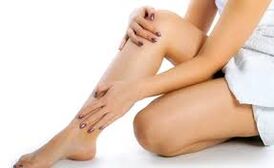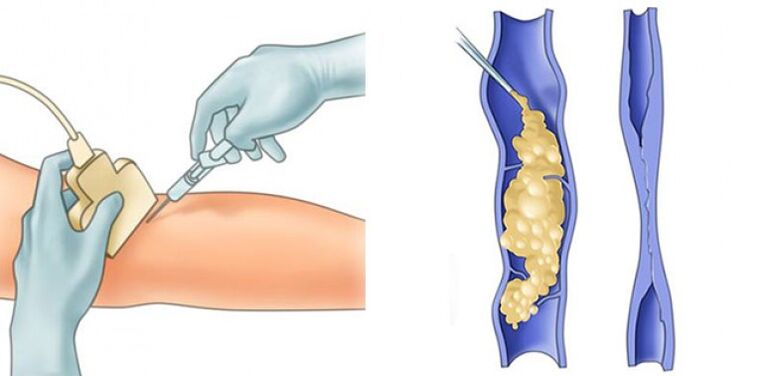Risk factors for the development of varicose veins
- Inheritance.
- Pregnancy is traditionally considered one of the main risk factors for the development of varicose veins, more frequent (3-4 times) damage to women.
- Obesity is a proven risk factor for varicose veins.At the same time, an increase in body weight index to 27 kg/m2 and above leads to an increase in the frequency of the disease by 33%.
- The lifestyle has a significant impact on the development and flow of varicose veins.In particular, the adverse effect of static loads extended with lifting weights or a non -moving stand in the standing position and sitting is proven
- During the course of varicose veins, near interiors, various corsets that increase intra -abdominal pressure have harmful effects.
- The high frequency of varicose veins in industrialized countries is to some extent due to nutritional characteristics.A high degree of food processing and reducing the diet of raw vegetables and fruits led to a constant deficiency of plant fibers needed for remodeling of the venous wall and chronic constipation, which cause permanent increase in intra -abdominal pressure.
- Dishormonal conditions are included in the pathogenesis of varicose veins.Their role in recent years has increased progressively, which is due to the widespread use of hormonal contraception tools, popularization of hormone replacement therapy during menopause and the treatment of osteoporosis.It is proven that estrogens and progesterone, as well as their derivatives, reduce the tone of the venous wall due to the gradual destruction of collagen and elastic fibers.

Clinical picture of varicose veins
Varicose veins-This is a disease that is not indifferent to beautiful sex.A varicose veins of female veins are on average three times more often than men.
Varicose vein signs- Extensions of the subcutaneous vein joint, pain, aggravation in the foot, swelling of the foot and lower leg, foot fatigue until the end of the day.Varicose joints are often prone to the formation of blood clots and infection.Phlebitis can develop - inflammation of the blood vessels orthrombophlebitis- Inflammation of the vessels complicated by blood clots.During the veins there are hard, very painful ropes.The skin changes, loses its elasticity and the color-becomes dense, dark brown.With slight damage, ulcers occur.A young woman can become a person with disabilities at age 40.
One of the serious complications of varicose veins is thrombophlebitis - a process in which a thrombus with subsequent forms of inflammation in the inner wall of the vein.This pathology is dangerous in that blood clots can come up with blood flow to enter the pulmonary arteries (tel - thromboembolism of the pulmonary artery) and lead to the death of a person.That is why varicose veins is a dangerous disease that needs to be treated.
Symptoms of varicose veins (these are symptoms should make you be careful):
1. Pain.
The causes of pain in varicose veins are very, very numerous.A variety of pain in varicose veins is also very rich:
- Hot pulsating pain,
- Night cramps and itching in muscle,
- Pain when walking
- Pain along venous drawers,
- General pain and lymat on the legs
2. Swelling in the leg.
3. A feeling of explosion and severity on foot.
4. Changes in the skin.At first, the skin becomes dry, the pigmentation appears - the skin of the feet darkens, covered with "brown spots".Later, various dermatitis, eczema and so -called trophic disorders in the form of poorly healing wounds until ulcers formation can join these symptoms.
5. A veins with compressed, elongated varicose veins on the surface of the skin of the feet and feet, with cylindrical or mixed extension.
6. Vascular stars (telangioectsia).Yes, people with varicose veins are also included in the group of patients with the expansion of small veins, as the causes of their appearance are the same.
The earliest stages of varicose veins development are very difficult to detect and diagnosis, because in the early stages of the disease there is no main feature - varicose veins.And the first and earliest symptoms of varicose veins, such as the sensation of the severity of the feet, moderate leg pain, increased fatigue, are also found with the initial stages of arterial diseases, flat feet, lumbar osteochondrosis.In such difficult cases, it is impossible to make the correct diagnosis yourself - you will need a doctor's consultation or even some specialists - a phlef, a neurologist, a surgeon and a manual therapist.The temporary instrumental diagnostic methods will also be required, such as ultrasound.
In phlebology, such symptoms are associated with the onset of pathological blood flow through the deep veins.
Most often, women notice the first signs of varicose veins in the spring, when you can change clothing, but it is not known where the venous "patterns" came from the feet, legs and hips.The foot is deformed, it becomes blue and ugly.
The first symptoms of varicose veins of the legs, during which you can doubt the onset of varicose veins, is an increase in the vein pattern on the skin of the legs.This defect, as already observed, has been most often observed by young women: standing or hips they notice wreaths that were not there before.
And often, such symptoms of an initial varicose disease precede the appearance of pain and other unpleasant sensations.Often the first "findings" of veins are accompanied by absolutely no unpleasant sensations.
Women are concerned about this vascular network only as a cosmetic defect.Such patients are often if they turn to specialists, then only to eliminate cosmetic discomfort.
If you have thin and pale skin, then the first symptoms of varicose veins are particularly noticeable.These are thin veins that do not last on the surface of the skin.The first symptoms of varicose veins can also look like a network of thin bluish vessels under the skin.
There may be no other complaints at the beginning of varicose veins.
The start of the development and progression of varicose veins is already manifested by varicose joints that extend over the surface of the skin - one or more.This is the main symptom of the initial varicose disease.
Varicose joints can be detected most often on the inner surface of the legs or buttocks.With long walking or extended legs, it is such a symptom of varicose veins such as fatigue, severity in the leg, a feeling of explosion (often in calves) manifests.These symptoms manifest particularly clearly with prolonged stand in a sitting position or standing.There is also painful or acute pain in varicose veins (diluted veins), convulsions in the calf muscles, especially in the evening, and sometimes at night.The first signs of dysfunction in the veins are also manifested by swelling of the legs by the end of the day.Edema usually occurs in the evening, especially after prolonged stay.After the night break, the swelling disappears completely.
These symptoms of varicose expansion initially pass quickly, if you rest, especially if you lie down.However, the disappearance or decrease of these symptoms when walking and after night rest are very characteristic of the symptoms of varicose disease.
But varicose veins, if they are not seriously engaged, do not withdraw, progress.Over time, such varicose veins symptoms look like persuasive dark blue intradermal veins, elongated on the surface of the skin of the feet and legs and similar to clusters of a very mature red grape.All of this is associated with explosion pain in the legs and calves, a feeling of heat in the legs, night convulsions in the calf muscles, swelling.Gradually, skin changes join these symptoms.At first the skin becomes dry, darkened, a pigment appears in it - brown spots.Shortly thereafter, so -called trophic disorders begin to join: poorly healing explosions and even ulcers.
Pain begins to worry more and more often, especially in the afternoon or in the evening.

Treatment of Varicose veins
There are many approaches to the treatment of varicose veins, but today the most effective method in treatment is a surgical operation -Venectomy.Medication and compression therapy is used as auxiliary methods in surgical treatment, and as independent methods in the early stages of varicose veins and the presence of contraindications for surgical treatment.
Treatment of varicose veins should be complex and individual, most often involves a combination of conservative and surgical treatment.
Types of varicose vein surgical treatment:
- Phlebectomy
- Laser coagulation
- Combined method
For the treatment of varicose veins, modern medicine uses laser surgery (EVLC).This method includes intravascular laser coagulation.Evlc- An intravascular laser is an advanced method for treating varicose veins.Laser exposure is a procedure that takes an intermediate position between non-surgical methods and surgical methods of treating the disease.
DignityEvlc- this is a radical, but low -traumatic way of treatment.After such procedures, the patient can leave the clinic after a few hours, being in good physical condition.Such treatment is performed under operating conditions and using local anesthesia.
The most modern laser equipment is currently used.At the same time, areas with patient problems are exposed to a laser with optimal wavelength (1470 nm).The used radial lumin provides reliable vein closures.In this case, there are no side effects and the surrounding tissue does not heat up.That is why after such surgery the number of bruises decreases, and the post -operative period passes easily and without pain.
The surgery is not accompanied by cut, leaves no pigmentation and wound.After 3 weeks after surgery, the patient's feet acquire a normal view without varicose joints.Such treatment of varicose veins has become widespread in Western countries.For large varicose veins, EVLC is used in combination with microflebectomy.It allows you to get a good aesthetic result.

Advantages of Using EVLC:
- Cure
- Trauma
- Cosmetic effect
- Lack of skin marks from distant varicose veins
- Treatment is performed under local anesthesia (tumecent anesthesia)
- Lack of pain syndrome
- High therapeutic effect
Potential complications
Treatment with a laser technique practically no complications.Rare complications include burns, probability of venous thrombophlebitis and paresthesia in the operated area.However, experienced phlebologists guarantee a quality result.
Such surgeries do not violate the patient's lifestyle.After the intervention, it is necessary to wear compression socks in order to provide a slight pressure on the veins.Special products are applied to the area of particularly large varicose joints - cotton rollers or latex pads.After the laser procedure, the patient is recommended to take a walk daily.
Treating varicose veins with a laser ensures maintenance of ability to work and physical activity.























